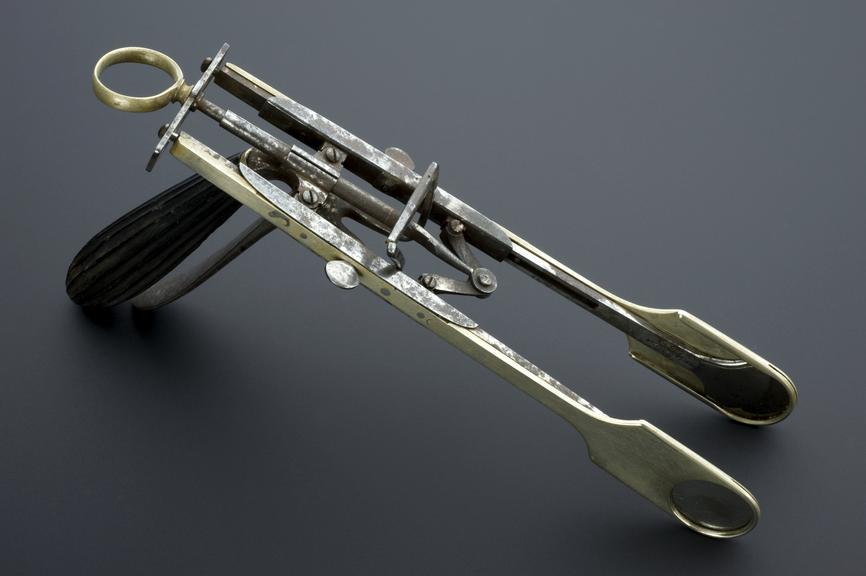

MacKenzie-type double tonsil guillotine, London, England, 1869-1900
- maker:
- Mayer and Meltzer

MacKenzie's double tonsil guillotine, metal and wood, by Mayer and Meltzer of London, 1869 to 1900
Tonsillectomy by guillotine was a standard treatment in the late 1800s for those who experienced recurring throat infections. This type of tonsil guillotine was invented by Morell Mackenzie (1837-92), a physician and laryngologist. The double guillotine meant both tonsils could be removed at the same time. In 1884, the instrument was described in his book 'A Manual of Disease of the Throat and Nose'. Tonsillectomy by guillotine fell out of favour in the early 1900s due to the high numbers of people who suffered haemorrhaging and recurrent sore throats. Parts of the tonsils would also be left behind. This example was made by Mayer & Meltzer, a surgical instrument maker based in London.
Details
- Category:
- Surgery
- Collection:
- Sir Henry Wellcome's Museum Collection
- Object Number:
- A647763
- Materials:
- brass (copper, zinc alloy), wood (unidentified), steel (metal) and complete
- Measurements:
-
overall: 50 mm x 220 mm x 140 mm, .21 kg
- type:
- tonsil guillotine




